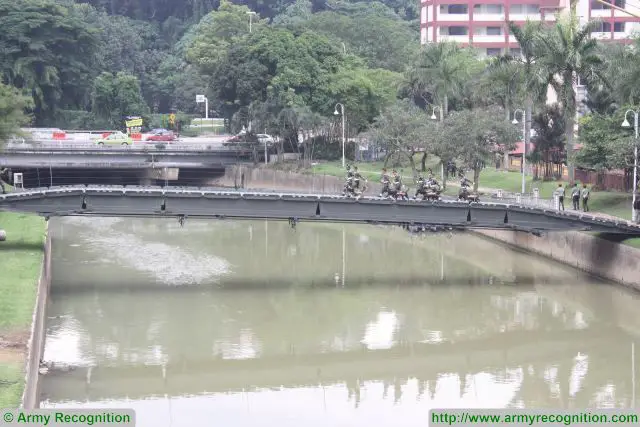Breaking news
BAE Systems wireless sensors military bridge health 82607172.
| 2017
|
|
|||
|
Defense & Security Industry News - Bae Systems
|
|||
|
|
|||
|
BAE Systems uses wireless sensors to track structural integrity of deployable military bridges
|
|||
|
The new ‘fatigue monitoring’ technology continuously detects the stress and strain on bridges designed to be used by tanks such as the more than 60 tonne Challenger® 2. The sensors then wirelessly transmit data to a handheld device, allowing soldiers to easily assess the health of the bridge.
|
|||
|
|
|||
 (source: BAE Systems) |
|||
|
|
|||
|
Without the use of an automated fatigue monitoring system, the remaining service life of rapidly deployable military bridges is based on manual records and is difficult to judge, resulting in bridges being retired early or overused. The new technology uses a series of sensors fitted to the bridge components which undergo the most strain and records around a hundred strain readings per second to monitor. A computer-analysis then gives a component-by-component overview of bridge health. BAE Systems’ use of fatigue monitoring technology gives military engineers the peace of mind that their bridges remain healthy, even on extended military campaigns where bridges can remain in place for many months.
The system is being tested by BAE Systems’ 50-strong specialist military bridging team based in Telford, UK, who operate Europe’s most advanced Bridge Test Facility. The Facility simulates thousands of bridge crossings by a variety of wheeled and tracked vehicles, allowing BAE Systems to assess bridge performance using comprehensive data records on how the various components perform. |
|||
|
|
|||
 BR90 bridge at a Malaysian show
|
|||
|
|
|||
|
John Lees, Bridging Business Manager for BAE Systems Land (UK) said: “The biggest obstacle to monitoring bridge health is achieving a continuous flow of accurate data telling you what the bridge is experiencing. Simply monitoring the number of crossings – as most military users do now – doesn’t give an accurate picture. Our new solution monitors and analyses all of these variables to give a real-time, accurate assessment of bridge condition. It will make it easier to use our bridges in civilian situations such as disaster relief, where keeping accurate data on crossings is very difficult. It will also reduce whole-life ownership cost by ensuring bridges are serviced only when required and that they can confidently be used for their entire service life.”
BAE Systems designed and manufactured the British Army’s rapidly deployable military bridging system - BR90 in the 1990s. BR90 comprises 74 bridging systems and can be used in a variety of configurations, adding up to a total of 8.5km of bridge trackway, and provides the most rapidly deployed and flexible gap crossing capability in the world. Another variant of the bridge can be used to span gaps greater than 60m. BAE Systems’ specialist team is now developing and testing a next generation Modular Bridging System to be even more agile and reliable. |
|||



















